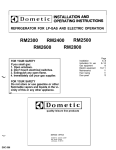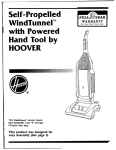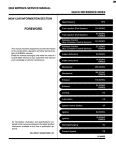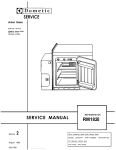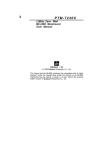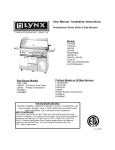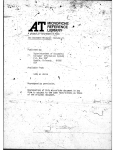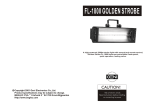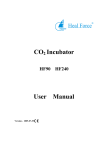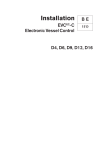Download Tech Books (3)
Transcript
MSA5AV141B Copyright 0 1992 Subaru of America, Inc. All rights reserved. This book may not be reproduced in whole or in part without the express written permission of Subaru of America, Inc. Subaru of America, Inc. reserves the right at any time to make changes or modifications to systems, procedures, descriptions, and illustrations contained in this book without necessarily updating this document. Information herein is considered current as of December, 1992. 0Subaru of America. Inc. MSASAV141 B CONTENTS Foreword System Description Overview .............................................................................................. 1 ABS-2E System Differences ................................................................ 2 ABS Operating Modes ......................................................................... 3 The Mechanical Valve .......................................................................... Chambers & Connections .............................................................. Moving the Plunger Piston ............................................................. Damping Oscillations ..................................................................... 4 4 5 5 ABS Operating Modes .......................................................................... Normal Braking Mode .................................................................... Pressure Reduce Mode ................................................................. Pressure Hold Mode ...................................................................... Pressure Increase Mode ................................................................ 6 6 7 8 9 Diagnostics ABS Self-Diagnostics ......................................................................... Displaying Codes .......................................................................... Interpreting Codes ........................................................................ Self-Tests ...................................................................................... Clearing Codes ............................................................................. 10 10 11 11 12 Troubleshooting Process .................................................................... Basic Checks ................................................................................ Self-Diagnosis ............................................................................... Trouble Codes .............................................................................. 12 13 14 15 Procedures Air Bleeding ......................................................................................... Overview ....................................................................................... Pedal Travel Measurement ........................................................... Sequence Control ......................................................................... 16 16 16 17 HCU Pressure Check .......................................................................... Overview ....................................................................................... Setting Up a Pressure Gauge ....................................................... Pressure Tables ........................................................................... Conclusion ......................................................................................... 18 18 18 20 22 iii SYSTEM DESCRIPTION ABS-2E Overview In the past, Subaru vehicles have been fitted with either of two anti-lock braking systems: one is a Robert Bosch unit; the other is the ABS-2SL system from Nippon ABS Limited. Now there is a new anti-lock braking system manufactured for Subaru by Nippon ABS Limited. The new Nippon system is designated ABS-2E. This system uses ABS components also found in previous anti-lock braking systems. These are as follows: 4 tone wheels 4 wheel speed sensors hydraulic control unit (HCU) electronic control unit (ECU) ABS warning light ~- I ~~I Subaru ABS Hydraulic Control Units The HCU incorporates two relays, three solenoid valves, a mechanical valve, and a fluid pump and motor. NOTE: - -- The Service Manual refers to the solenoid valves in the HCU as “magnet valves.” In the ABS-2E videotape and in this VRB we use “solenoid valve” because it is a name more commonly used in the U S . market. ABS-PE HCU and ECU Like its predecessors, ABS-2E is a foursensor, four-channel system. However, it is smaller and lighter than the earlier designs. In addition, the ABS-2E system incorporates improvements in the areas of trouble code memory, self-diagnostics, inspection, and maintenance. The ABS-2E system will appear in production with the start of the 1993 model year. It will be available on the Legacy model, if equipped with an automatic transmission. Also, every lmpreza that has anti-lock braking will be fitted with the ABS-2E system. An ABS Wheel Speed Sensor and Tone Wheel 1 ABS-2E SYSTEM DESCRIPTION ABS-2E System Differences The ABS-2E system differs from the earlier ABS designs in four ways: 1. Earlier designs used four solenoid valves. The ABS-2E hydraulic control unit (HCU) uses three solenoid valves and one mechanical valve. 2. Its electronic control unit can store up to three trouble codes, rather than just one. 3. The number of separate error conditions the ECU can recognize has been increased. That means there are more trouble codes available. 4. There is a revised bleeding procedure. ABS-PE Hydraulic Control Unit Notes 2 ABS-2E SYSTEM DESCRIPTION The Mechanical Valve In the ABS-2E hydraulic control unit, the fourth solenoid valve has been replaced by a mechanical valve containing a plunger piston. This mechanical valve controls the left rear hydraulic brake circuit. w CHAMBERS & CONNECTIONS In the right side of the valve, is a pressure equalization chamber. The head of the plunger piston divides this chamber in half (zones A and B in the diagram). If pressure in both halves of the chamber is equal, spring tension keeps the plunger piston in the “home” position, all the way to the right. The right half of the chamber is connected to the master cylinder (port 2) and to the pump in the HCU (port 6). The left half of the pressure chamber is connected to the right rear hydraulic circuit (port 5). Mechanical Valve Components The other side of the mechanical valve Zontains a passage (zone E). One end of this lassage is connected to the master cylinder port 1); the other side is connected to the lump (port 3). The passage is also connected hrough a pressure port to a second pressure :hamber (zone D). This chamber is Zonnected to the left rear hydraulic brake :ircuit (port 4). Also in this chamber is a second piston, piston 2. Piston 2 is connected o the plunger piston by means of a pushrod. During conventional braking, the master cylinder pressurizes both sides of this chamber. However, if pressure in the left half of the chamber is lower than pressure in the right half, the plunger piston is allowed to move to the left. E Pressure Port D Piston2 / Pushrod / I 4 I B \ Plunger Piston P ABS-2E SYSTEM DESCRIPTION ABS Operating Modes To illustrate the functioning of the four operating modes of this ABS system, the next four pages show the system diagram with the mechanical valve in the appropriate position for each mode. For clarity, we assume that the ECU is operating only the solenoid for the right rear brake circuit. Recall that this circuit also effects the left rear brake circuit through the mechanical valve. Normal Braking Mode _- 1; I I - -I NORMAL BRAKING Driver depressing pedal ECU passive (monitoring) Zero current in solenoid valves Pump off Plunger piston full right, pressure port open Master cylinder pressure supplied to all wheel cylinders 6 ABS-2E SYSTEM DESCRIPTION PRESSURE REDUCE Pump pressure raising pedal ECU controlling solenoid valves and pump Full current in the right rear solenoid valve Pump running Plunger piston moves left, closes pressure port; system balances the two rear wheel cy Iinde rs 7 ABS-2E SYSTEM DESCRIPTION PRESSURE INCREASE Driver pressing pedal, pedal falling Zero current in solenoid valves Pump off Master cylinder pressure applied to right rear wheel circuit, raises pressure Plunger piston begins to move right, opens pressure port, master cylinder pressure drives plunger piston full right Full master cylinder pressure applied to the left and right wheel cylinders NOTE: If necessary, the ECU cycles each brake circuit through the various ABS modes as required to control wheel lock-up. 9 DIA GN 0sTICS ABS-2E ABS Self-Diagnostics The ABS-2E electronic control unit, or ECU, can store up to three trouble codes in its memory. It does this whenever it detects an out of range signal in any of its inputs. When a fault condition is active, the ECU goes into “fail-safe” mode and turns on the ABS warning lamp. The brake system then functions only in conventional mode. If the fault condition is caused by an intermittent problem, the ABS warning lamp may go off at the next ignition switch “ONOFF” cycle, but the code will still be stored in the ECU’s memory. Removing the Trim Panel DISPLAYING CODES To display any stored codes, use the following procedure: 1. Remove the small kick panel on the lower driver’s door “A’pillar. 2. Enter ABS system diagnostic mode by jumpering terminal L in the ABS check connector to body ground. Check the schematic in the service manual to identify terminal L. Note: Some models have a grounding lead attached to the check connector. 3. Turn the ignition switch to “ON.” 4. Observe the ABS warning lamp. It will begin to flash out one or more codes. The ABS Check Connector When you enter diagnostic mode, the ECU displays the newest code first, then the second code, and then the oldest. Grounding Terminal L, ABS Check Connector 10 ABS-2E Each code display cycle begins with the start code “eleven.” After code 11, the ECU displays any stored trouble codes. When you see code 11 again, you know the ECU is repeating the cycle. INTERPRETING CODES DIAGNOSTICS This means the ECU stays in fail-safe mode as long as the first fault condition remains in effect, and will neither detect nor store in memory any additional fault conditions. If the first fault condition clears, the ECU again exercises active ABS control at the next key “ON .” Each code is made up of long and short flashes, just like those used by the fuel system. Count each long flash as 10, each short flash as one. For example, if the lamp flashes one long and one short-that represents code 11. If it flashes two long and one short-that is code 21. SELF-TESTS Each time the ignition switch is turned from “OFF” to “ON,” the self-diagnostic function begins to look for fault conditions. These selftests occur in two stages: one at key “ON” and another as soon as the vehicle has been driven at a speed of 6 miles per hour or more for 20 seconds. One Fault Code Stored in Memory If a second fault condition occurs, the ECU will then store the second code. Assume that a particular vehicle has no ABS codes stored. If the ECU detects a fault condition, it goes into fail-safe mode and turns on the ABS warning lamp. In fail-safe mode, the ABS system is essentially shut down and completely passive, while the brake system operates conventionally. The system remains in fail-safe mode until the ignition switch is turned to “OFF.” The next time the ignition switch is turned to “ON,” the ECU again initializes and looks for fault conditions, first at key “ON,” and again after 20 seconds at 6 miles per hour or more. If the fault condition is still there, the ECU simply returns to fail-safe mode. NOTE: Two Fault Codes Stored in Memory Even though the ECU can store up to three codes, this can happen only if at least two of the fault conditions are intermittent. 11 ABS-2E DIAGNOSTICS To get a third code into memory, the second fault condition must also be intermittent. When it clears, the ECU can come out of failsafe mode at the next ignition "ON-0FF"cycle. At that point, the ECU can detect, then store the third code. If the ECU detects another fault condition once three codes are in memory, the newly arriving code displaces the oldest stored code. The newest code takes the first place in line for display. " x x CLEARING CODES _ & " "lxx Three Fault Codes Stored in Memory To clear the memory of all stored codes, alternately disconnect and reconnect the jumper between ground and terminal L in the ABS check connector. Do this three times in the span of about 12 seconds. TIP: At the moment the ECU clears its memory, you can hear the relays in the HCU cycle once. Trou b eshooting Process To troubleshoot ABS systems, it's best to follow a step-by-step procedure like the one on page 31 of the 1992 Legacy ABS-2E Service Manual Supplement. 7efer to the Service Manual for Diagnostic Information 12 ABS-2E DlAGNOSTICS Check the tires to confirm that they are the correct tires for the vehicle, that they are in good condition, and that they are inflated to the correct pressure. If you find something wrong at this stage, correct it and see if it eliminates the reported symptom. If not, continue to Step 3. Step 3 is “Self-diagnosis.” At this time, put the ECU into self-diagnostic mode, and monitor the ABS warning lamp for trouble codes. If the lamp functions properly and there are no trouble codes stored, you will see a continuously flashing Code 11. In that case, go to the General Troubleshooting Chart. There you will find separate procedures for the following symptoms: brake pedal vibration and noise excessive stopping distance too much or too little pedal travel inoperative ABS system frequent ABS operation Checking Tire Size and Type Checking Tread Depth Checking Inflation Pressure 14 ABS-2E DIAGNOSTICS Proceed to Step 4 in the diagram if the ECU has stored one or more codes, or if the ABS warning lamp is malfunctioning. Step 4 directs you to “troubleshoot in accordance with trouble code.” That means, turn to Section T6 and look for the specific chart that matches the trouble code you recorded. There is a chart in Section T6 to cover every possible ABS trouble code. A table lists all of the codes, tells you where to look for diagnostic information, and summarizes the reason for the trouble code. Notice that in some cases you have to look all the way over to the right column to find out to which component a specific trouble code refers. Once you’ve identified a specific trouble code, the Basic Troubleshooting Procedure tells you what to do next: 1. Follow the troubleshooting steps in the chart. 2. Make the necessary repair. 3. Clear the memory. 4. Repeat the self-diagnostic check. Checking a Wheel Speed Sensor Circuit In all cases, road test the vehicle when the preceding steps are done. This is necessary because some codes will not set until vehicle speed has been driven at six miles per hour or more for at least 20 seconds. NOTE: Do NOT substitute spinning the wheels on the service lift for a road test. On FWD vehicles, this can cause the ECU to incorrectly set a fault code. I Contents of diagnosis Trouble in the warning light drive circuit (Warnina liaht is not on for 1.5 seconds after iqnition switch is on ) [Warning light OFF] 0 [Warning light ON] or [Trouble code output] [TGBO] l - Trouble in the warning light drive circuit. Start code: a. Trouble code is shown after start code. b. Only start code is shown in normal condition. Faulty ABS sensor (Open circuit or input voltage excessive) I I I Front right wheel sensor I Front left wheel sensor 1 Rear right wheel sensor I Rear left wheel sensor ~~~~ Faulty ABS sensor (When there is no open circuit or speed signal input.) I I I Rear right wheel sensor I Rear left wheel sensor 28 Faulty tone wheel etc. Front right wheel control 33 [T6FO] Faulty solenoid valve circuit(s) in hydraulic unit. Front left wheel control Partial list of Trouble Codes From 1992 Legacy Service Manual 15 I I I I I I ABS-2E PROCEDURES The difference between the two distances (pedal depressed, pedal released) must be less than 3.75 inches (95 mm). If it is greater than that, there is air trapped in the HCU. Expel this air using Sequence Control (explained in the next section of this VRB). SEQUENCE CONTROL Sequence Control is the name of a mode in which the system automatically runs the HCU pump motor and cycles the solenoid valves. The Sequence Control actions help to purge air out of the hydraulic control unit. Pedal Effort Gauge (SOA 636500) To activate Sequence Control, proceed as follows: 1. With the ignition off, jumper both the “L” and “K” terminals in the ABS check connector to ground. 2. Turn the ignition switch to ON and watch the ABS warning lamp. 3. When the lamp goes off, immediately press and hold the brake pedal. 4. The ECU now runs the pump and cycles all of the solenoid valves. You will hear and feel this happening. 5. When you hear the pump stop, you know Sequence Control is done. Release the brake pedal and turn the ignition to OFF. When you have completed Sequence Control, bleed all four brake circuits again. Top off the master cylinder reservoir after bleeding each circuit. Then road test the vehicle at low speed. Apply the brakes hard two or three times to make sure that the brakes are working properly. Adding Brake Fluid to the Reservoir 17 PROCEDURES ABS-2E HNPT ' TO 1/8 ~ REDUCER Doing an HCU Pressure Check INVERTED 3/16 STEEL BRAKE LINE 3/16 FLARE TO 1/8 NPT COMPRESSION ---@ UNION 10MM X 1.0 FITTING 3/16 STEEL BRAKE LINE I HCU Pressure Check Set-up 19 ABS-2E PROCEDURES DESCRIPTION 1. INTITAL VALUE: the hydraulic circuit pressurizes as you press the brake pedal. 2. WHEN DECOMPRESSED: the circuit automatically loses pressure as the HCU cycles the solenoid valve to pressure reduce mode. 3. WHEN COMPRESSED: the circuit regains pressure (at least equal to the initial reading) as the system returns to pressure increase mode. When Sequence Control starts, the left front solenoid cycles first, then the right front solenoid, and finally the right rear. As the right rear solenoid works, pressure in the left rear brake circuit is simultaneously regulated by the mechanical valve. It is not necessary to exactly match the values in the pressure table during your tests. The important thing is that you observe the sequence shown in the table below: 1 CIRCUIT Initial Value When Decompressed When Compressed Front Brakes 498 psi (3,432 kPa) 71 psi (490 kPa) 498 psi (3,432 kPa) Rear Brakes 498 psi (3,432 kPa) 71 psi (490 kPa) 498 psi (3,432 kPa) The pressure check is repeated for each of the four HCU pressure output ports. Recall that three of the brake hydraulic circuits are controlled by solenoid valves (all but the left rear circuit). If a check of any one of these circuits yields incorrect pressure readings, this may indicate a non-functioning solenoid valve. 1 CIRCUIT I ANY Initial Value Typical incorrect readings are shown in the two tables below. In the first example, the pressure does not decrease from the initial value. In the second example, the pressure fails to reach the initial value at the start of Sequence Control. Decompressed When 498 psi (3,432 kPa) 498 psi (3,432 kPa) I Compressed When 498 psi (3,432 kPa) Example 1: Pressure does not decrease; may indicate faulty solenoid valve Initial Value CIRCUIT r I Less than 498 psi (3,432 kPa) I When Decompressed When Compressed 71 psi (490 kPa) Less than 498 psi (3,432 kPa) Example 2: Pressure does not reach initial value at start of Sequence Control 20 I ABS-2E PROCEDURES Conclusion Effective diagnosis of the ABS-2E system depends on a logical, step-by-step approach. When you troubleshoot an ABS-2E system, use the appropriate service manual, follow the procedures, and do not skip any steps. As always, pay attention to the basics. Use the instructions in the service manual and in this VRB to look for fault codes, perform diagnostics, and properly bleed air from the system. When appropriate, use the HCU pressure check to test the functioning of the three solenoid valves and the mechanical valve. 22





























